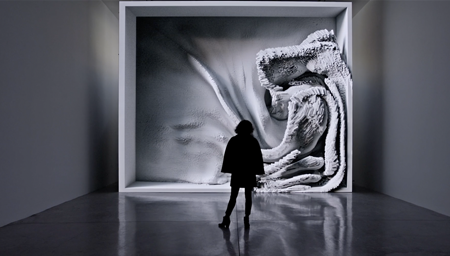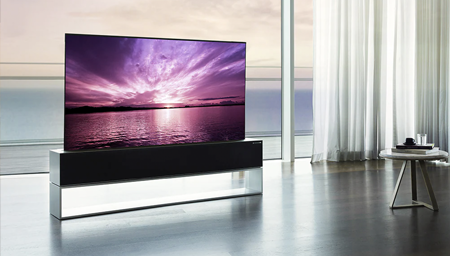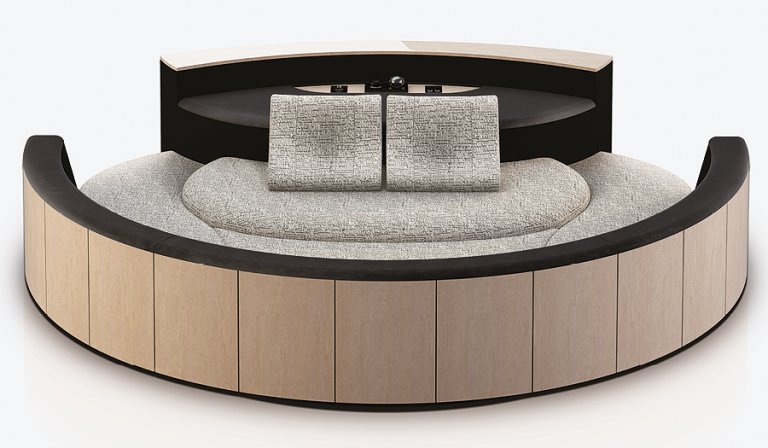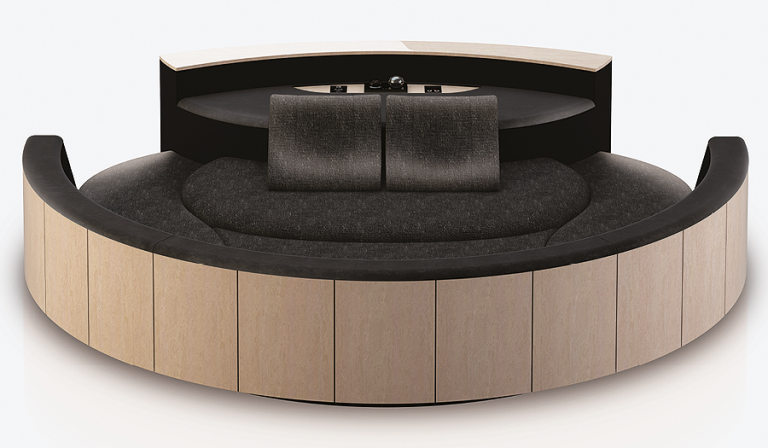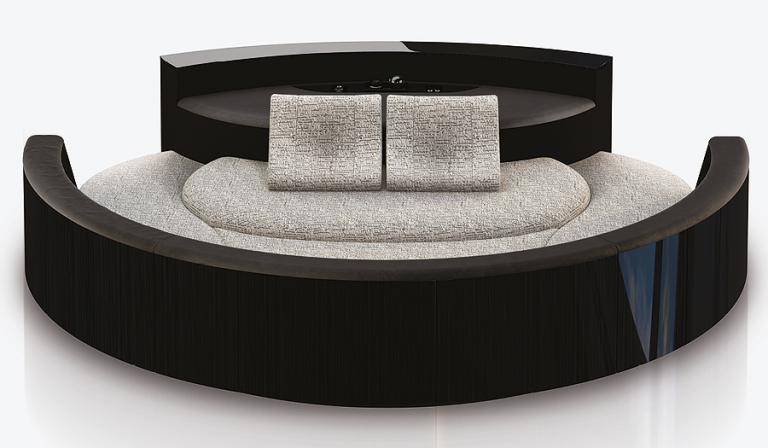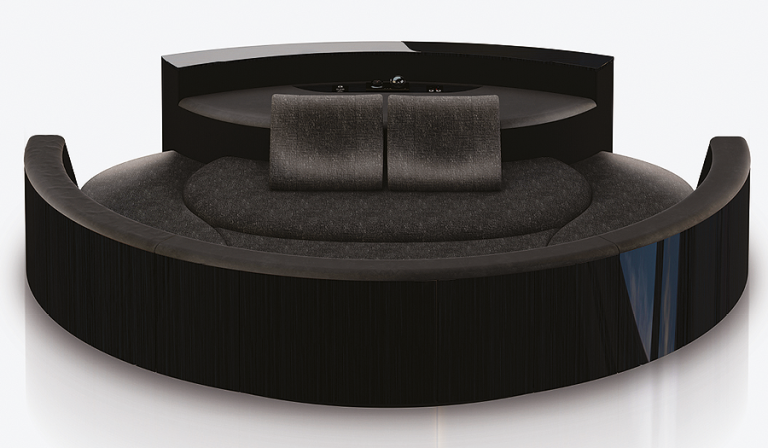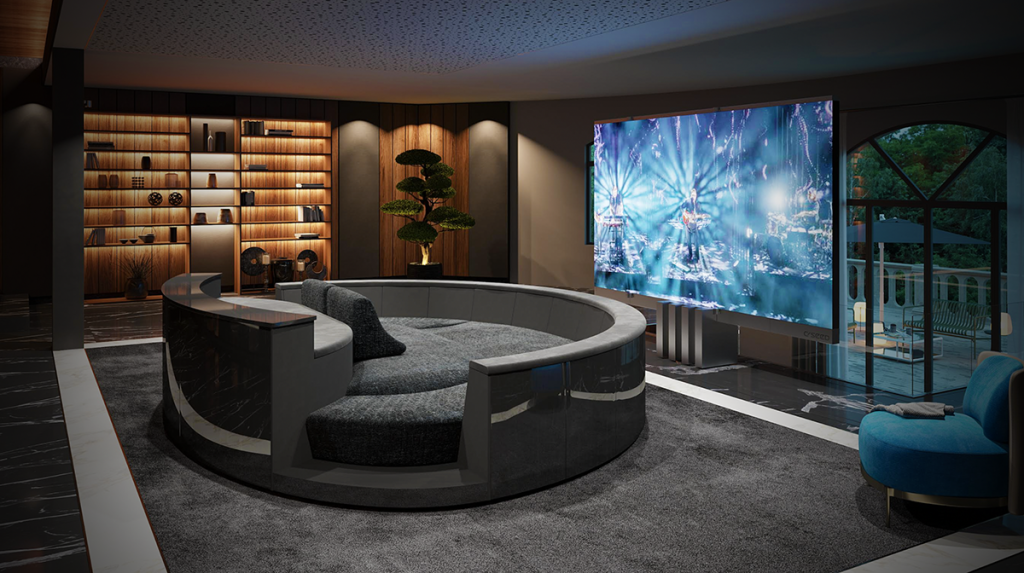
Beyond the Home Theater Box
C Seed and L-Acoustics launch a state-of-the-art home theater system—without the room
by Brent Butterworth
March 14, 2022
When home theater began, the dim images demanded dark surroundings and the analog audio technology couldn’t easily adapt to anything other than a relatively small, rectangular room. Even today, after countless technical revolutions in video and audio, most home theaters still follow the same pattern established three decades ago: A box-shaped space with two or three rows of chairs. At long last, two companies have joined forces to break free of this paradigm to deliver an extraordinary experience in sight and sound that takes viewers outside of the box.
The companies, not surprisingly, exist at the far reaches of the home theater industry. They’re C Seed, an Austrian company that specializes in outdoor TVs, and L-Acoustics, a renowned sound-reinforcement company making its first real foray into consumer audio. They’ve dubbed their project Maunakea.
Maunakea has two main components. One is C Seed’s unique M1 TV, which rises out of a floor (or the ground, or the deck of a yacht) and unfolds into a 165-inch screen. The other is L-Acoustics’ Island, a round, rotating seating unit that incorporates a full surround-sound system. While the system is flexible and can be adapted to numerous settings, the killer app for Maunakea is a living room adjacent to an outdoor terrace. The Island faces indoors, but at the touch of a button, it quietly and smoothly swivels to face outdoors, while the C Seed TV rises and unfolds into a screen comparable in size to that of a small commercial cinema.
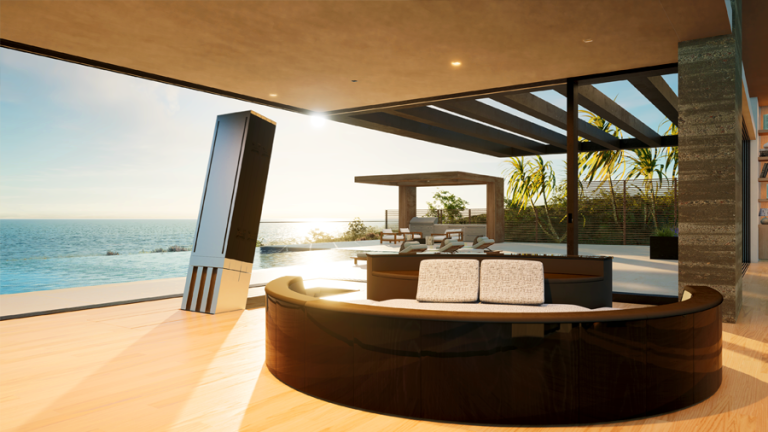
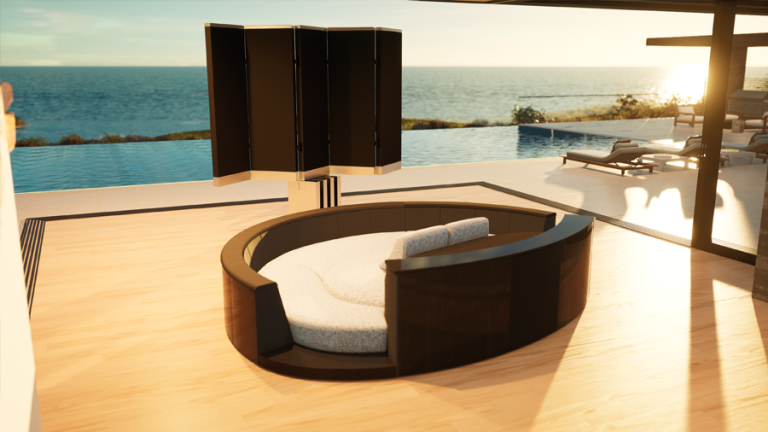
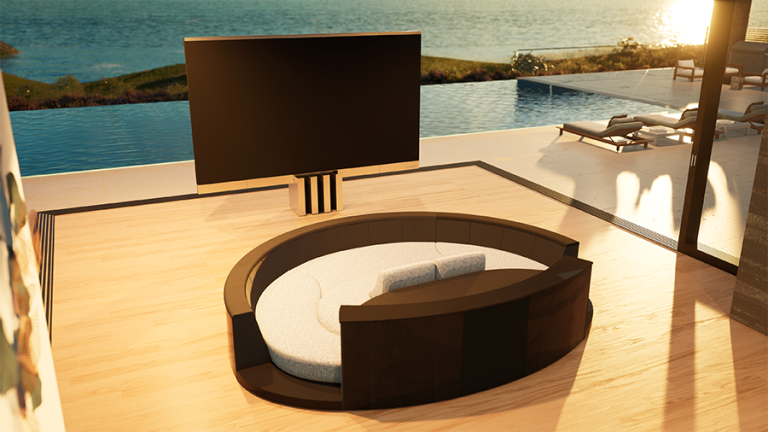
I haven’t experienced Maunakea—but I was able to check out the C Seed M1 at the company’s Beverly Hills showroom and the Island about 30 miles away at L-Acoustics’ Westlake Village, California headquarters.
The C Seed showroom displays a 165-inch fixed screen indoors—which isn’t really what the technology was intended for but it works extremely well. The LED screen is bright enough to watch in direct sunlight.
The TV is made up of many tiny screens, each measuring about 6 by 5 inches—about the same size as the screen on an iPad Mini. Each screen is magnetically attached, so if one of them malfunctions it can easily be replaced. About 30 of the screens are combined in a module, and multiple modules make up the screen, which is available in sizes up to 301 inches diagonally. If you walk right up to the TV, you can see the seams between the individual screens, but if you back off about 6 feet, they become invisible and the C Seed TV’s picture looks like that of a high-quality 70-inch TV—just bigger and brighter.
The 4K HDR TV itself works much like a normal video display. It has HDMI inputs, and interfaces with home automation systems for touchscreen control. About 34 inches of space below the floor is required to house the TV’s mechanism. It takes about 30 seconds to rise out of the floor and another 45 seconds to unfold. The screen can swivel 180 degrees in any direction.
The L-Acoustics Island is designed for two people—although the entire lower surface is comfortably padded, so there’s no reason the kids couldn’t join the fun, too. The rim around the Island holds 18 speakers plus two subwoofers. Around the front and sides are 13 coaxial two-way speakers, each with a tweeter nestled inside an 8.5-inch woofer. Along the rear are five 6.5-inch coaxial speakers, and the space behind the seats houses two 18-inch woofers. All of the speaker drivers are based on designs used in L-Acoustics’ professional sound-reinforcement speakers. Those wishing to enjoy Dolby Atmos and DTS:X immersive sound can add L-Acoustics’ X4i speakers in the ceiling; typically, they’ll be covered with fabric. The Island is available in stock off-white and charcoal fabrics, or custom fabrics of the client’s choosing.
Although it may seem that a short, curved divider isn’t sonically suited to house a surround system, the way L-Acoustics has configured the system made me feel enveloped, as if I were hearing a full surround system. In fact, certain directional effects seem more pronounced than they might have in a standard home theater. Only rarely did I get the sense that speakers were built into the unit I was sitting in. It seemed more like they were concealed in the walls of the large L-Acoustics showroom.
The speaker amplifiers are housed in the space behind the seats. The system can be connected to StormAudio ISP Elite or Trinnov Altitude surround processors—the C Seed TV demo in Beverly Hills (which used a standard L-Acoustics speaker system) employed the former, while the Island demo at the L-Acoustics Westlake Village office employed the latter. The Beverly Hills demo sourced images from a Kaleidescape video server system.
While I regret that I haven’t had the chance to savor the full Maunakea experience, as no full installations have yet been completed, I did thoroughly enjoy what I saw and heard. The system is, of course, costly—while the price will depend on the specifics of the system and the complexity of the installation, about $1 million per system is a good ballpark figure. That means only a very few wealthy clients will get to enjoy Maunakea, but I have to imagine they’ll consider it money well spent.
Brent Butterworth has been a professional audio journalist since 1989 and was one of the first journalists ever to write about home theater and review home theater products. He is currently a senior staff writer at Wirecutter and editor of the SoundStage Solo headphone website, and previously served as editor-in-chief of Home Theater and Home Entertainment magazines, contributing technical editor for Sound & Vision magazine, and as marketing director for Dolby Laboratories.
© 2023 Cineluxe LLC


